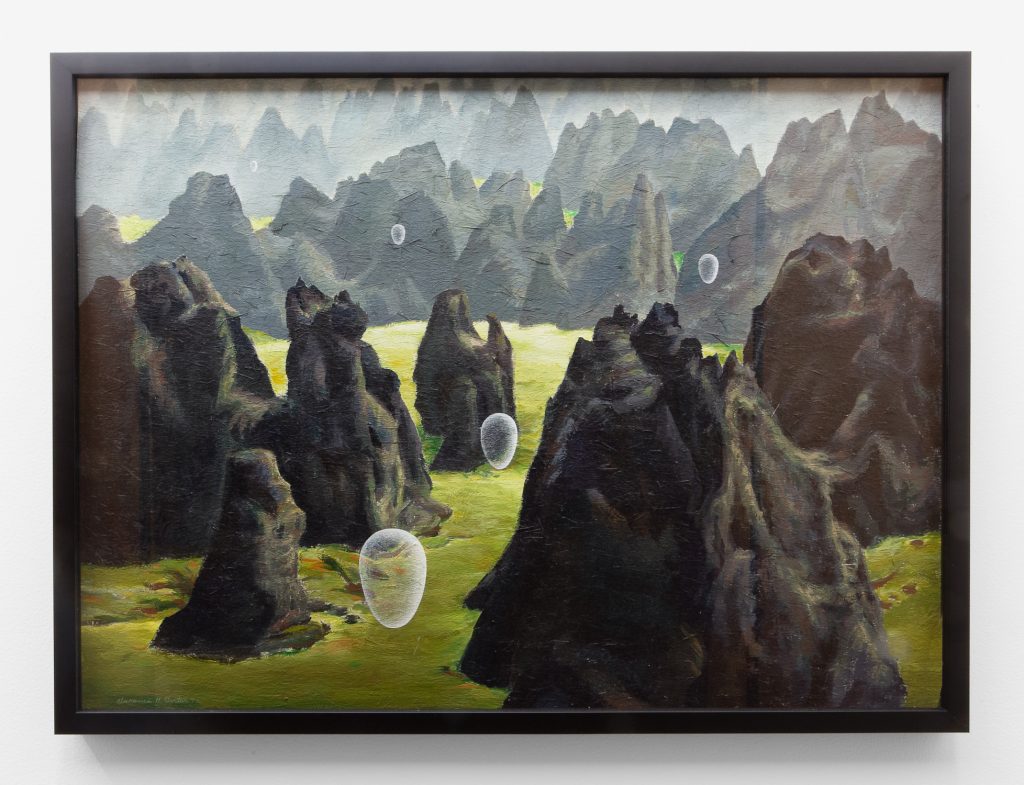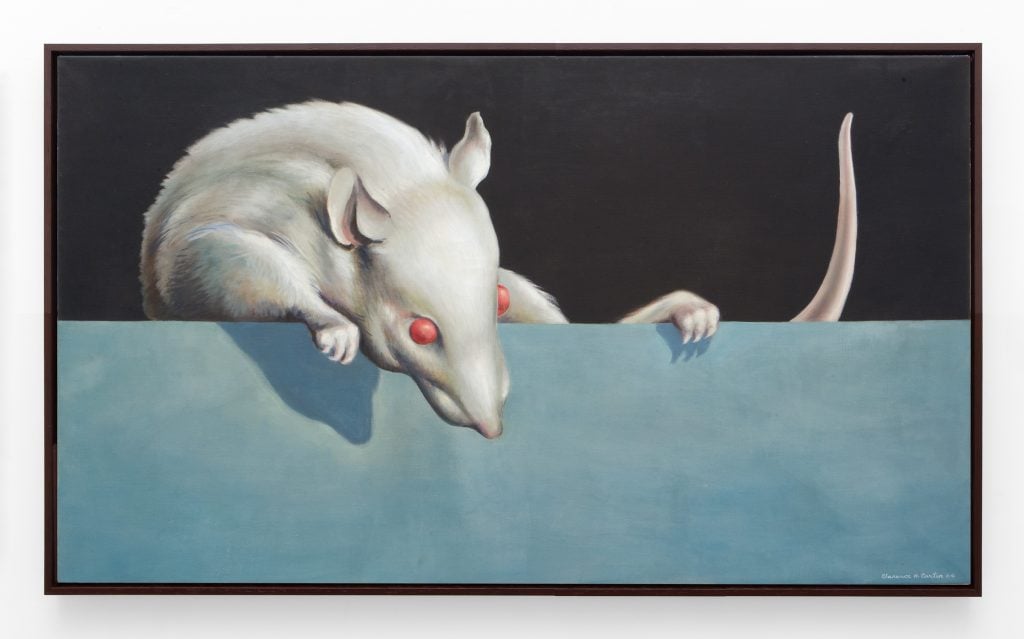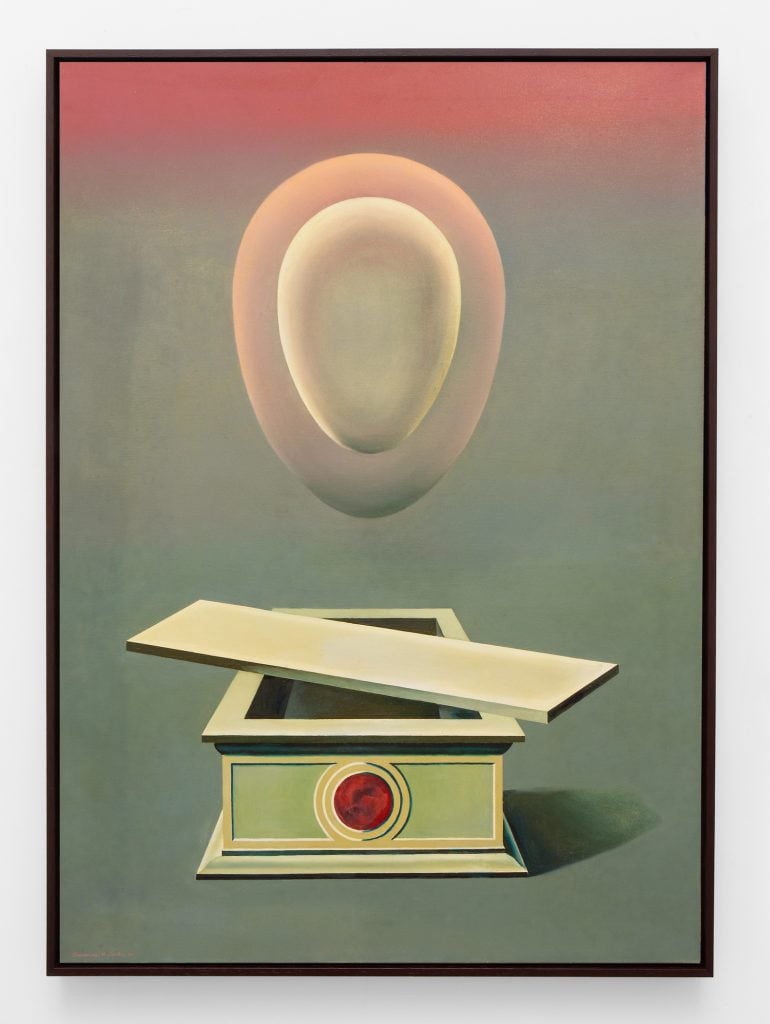Long Overlooked, the Eerie and Uncanny World of American Surrealist Clarence Holbrook Carter Is Getting New Life in Los Angeles


Katie White

Glowing ovoid shapes hover over desolate, dream-like landscapes in some paintings. In another, a green-skinned vision of Tennyson’s Lady of Shalott lies supine on a watery bed, glowing in phosphorescence. A white rat with red eyes seems distressingly poised to climb over a blue monochromatic wall and into the viewer’s space in yet another painting.
These uncanny and disorienting scenes are from the unlikely imagination of Clarence Holbrook Carter (1904–2000), a little-known American Surrealist who worked in the middle decades of the last century.
Now, Various Small Fires Los Angeles is hosting “Clarence Holbrook Carter: American Surrealist,” the first West Coast solo exhibition of Carter’s works, co-organized with Cleveland’s WOLFS Gallery. The exhibition centers loosely on three series of works completed across eight decades, from the 1920s until the cusp of the new millennium: “Over and Above,” “Transection,” and “Eschatos.”

Clarence Holbrook Carter, The Lady of Shalott (1927). Courtesy of Various Small Fires.
Carter’s paintings don’t fit neat categorization. In his “Over and Above” series from the 1960s and ‘70s, animals, both friendly and menacing, appear over painted monochromatic walls, while the latter two series are focused on Carter’s “ovoids,” orb-like shapes painted into Surrealist tableaux,
The gallery notes that Carter has often earned comparisons to Kay Sage, Max Ernst, and Giorgio de Chirico, but a metaphysical, even spiritual sense suffuses his works too. The art of Agnes Pelton, another recently reevaluated painter, sometimes comes to mind.

Clarence Holbrook Carter, Over and Above No. 15 (1964). Courtesy of Various Small Fires.
Death and the unknown beyond are obvious preoccupations for Carter. His ghostly 1927 painting The Lady of Shallot is the first of his paintings to take death and transience as its subject matter. Based on Tennyson’s poem, the cursed Arthurian maiden Elaine of Astolat is pictured, dying for her love of Sir Lancelot—her figure cast with the same strange luminesence that would define the orbs seen in Carter’s later works.
The ovoid shape has obvious links to the egg, life, and fertility, but also, for Carter, death and the possibility of rebirth. In Carter’s “Transection” series from the 1970s to the ’90s, these ovoids are pictured floating in emptied architectural spaces, reminiscent of de Chirico’s desolate landscapes. At times, there is a Christ-like quality to the compositions, with the radiant orbs appearing over tomb-like structures, as though resurrected.

Clarence Holbrook Carter, Transection No. 2 (1991). Courtesy of Various Small Fires.
“‘Transection’ is a theological term meaning ‘to cross,’ and in these images, the orbs, whose shape connotes the outline of a human face, might suggest the transference from the earthly to the metaphysical realm,” the gallery says in a statement on the show.
In Carter’s final series, “Eschatos,” these shapes are seen moving through mystical terrains, like spirits roaming a celestial plane. Together, there is a strange and oddly comforting trajectory to Carter’s works, which seem to move, across the decades, from the world of mythic animals and fable to the threshold of the mysterious world beyond.
“Clarence Holbrook Carter: American Surrealist” is on view at Various Small Fires, Los Angeles, through Saturday, February 27, 2021.